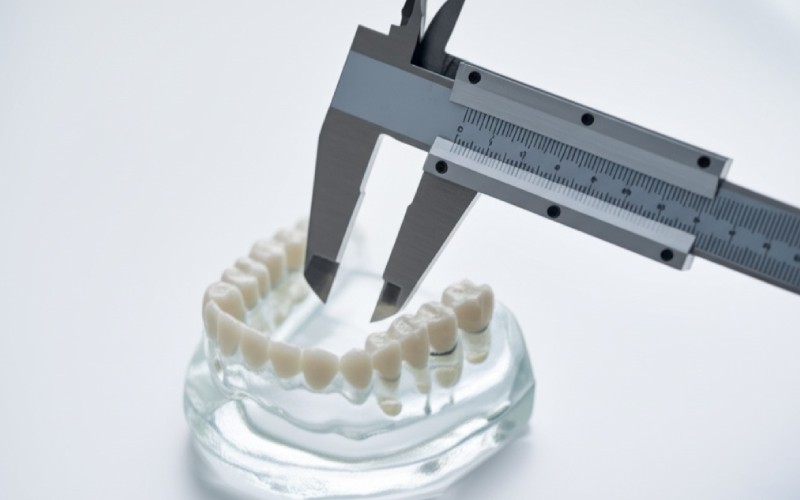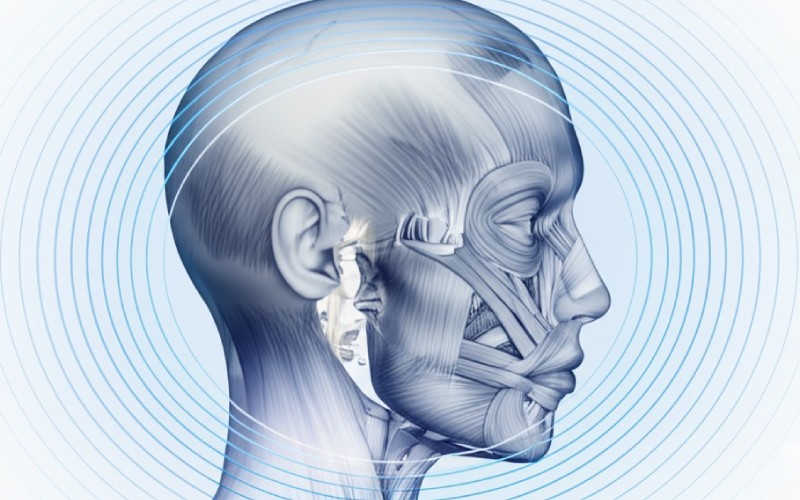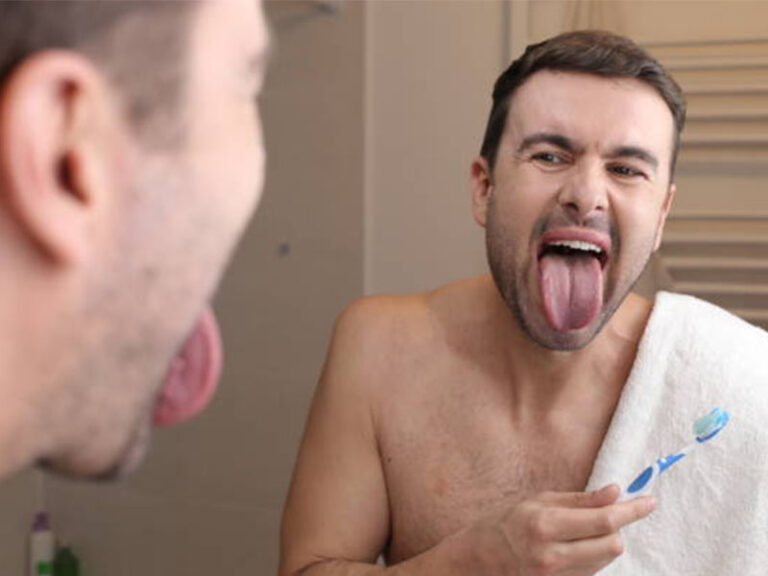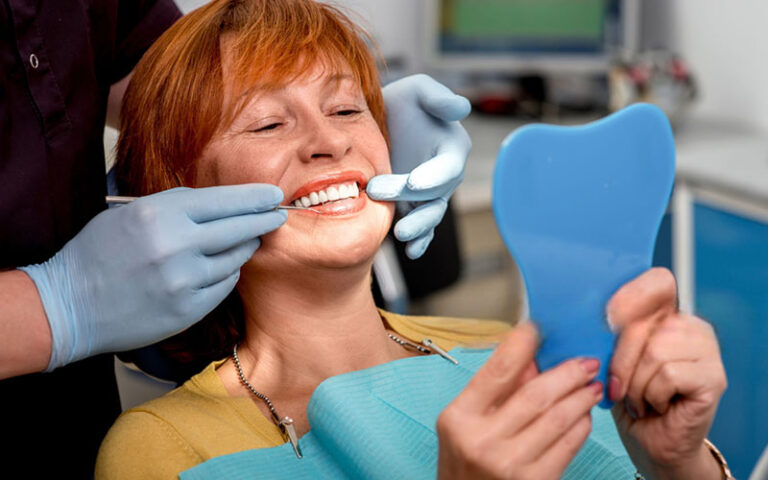
Vertikale Dimension der Okklusion: Ein Leitfaden für Ihren Biss
The vertical dimension of occlusion, also called VDO for short, is a key idea in dentistry. The VDO is simply the height of your lower face when your teeth are together. Think of it as the distance between two points, maybe your nose and your chin, when you bite down. It sounds small, but it’s a huge deal. Getting the VDO right affects how you look, chew, and feel. This article will explain why a proper VDO is so important. It is vital for your comfort, especially if you have worn teeth or need a complete denture.
Inhaltsübersicht
What Is the Vertical Dimension of Occlusion (VDO) Anyway?
Let’s break it down. Your jaw has two main positions. One is when it’s relaxed. This is called the physiologic rest position. Your teeth are slightly apart. Your muscles are calm. This position is also called the mandibular rest position or clinical rest position. The other main position is when you bite together. The distance from your upper jaw to your lower jaw in this biting position is the vertical dimension of occlusion. This is also known as occlusal vertical dimension.
The small space between your teeth when your jaw is at rest is called the freeway space. Finding the right vertical dimension of occlusion is about making sure this space is correct. The VDO sets the height for your bite. It helps your jaw muscles, called the opening and closing muscles, work right. The VDO is a key measurement in all of dentistry. It is a crucial dimension in space for your face.
A correct VDO makes your face look balanced. It supports your lips and cheeks. It helps you speak and chew without problems. Your dentist thinks a lot about the vertical dimension of occlusion when they work on your teeth. The determination of the VDO is a critical first step in many treatments. The VDO is a core part of your mouth’s structure.
Why Is Proper VDO So Important in Modern Dentistry?
Focus on the customer’s main problem. In dentistry, one of the biggest problems is a bad bite. The vertical dimension of occlusion is the foundation of a good bite. When the VDO is right, your jaw works well. You can chew food with ease. Your face looks full and youthful. A proper VDO also helps prevent jaw pain and headaches.
When dentists make crowns, bridges, or dentures, they must get the VDO right. If they don’t, the new teeth won’t feel good. They might even cause harm. The entire balance of the mouth depends on the vertical dimension of occlusion. That is why your dentist takes careful measurements in determining vertical dimension. An accurate VDO measurement is the key to success.
Imagine building a house. The occlusal vertical dimension is like the foundation. If the foundation is too high or too low, the whole house will have problems. The doors won’t close right, and the floors will be crooked. The same is true for your mouth. An incorrect VDO can lead to many issues, from sore muscles to worn-down teeth. The determination of occlusal vertical dimension is vital.
How Can You Tell if Your VDO is Lost or Reduced?
Over time, you can lose your VDO. This is called loss of VDO or vdo loss. This often happens when you grind your teeth. It also happens if you have a loss of posterior teeth, which are your back teeth. When these teeth wear down or are removed, your jaw has to close further to make your teeth touch. This closing reduces the vertical dimension of occlusion.
You might notice signs of a reduced vertical dimension. Your chin may look closer to your nose. The corners of your mouth might droop down, making you look older or unhappy. You might have trouble chewing certain foods. Some people get pain in their jaw joints. These problems are sometimes called temporomandibular disorders. This loss of Vdo can happen slowly, so you might not notice it at first.
If you are an edentulous patient, meaning you have no teeth, you have a complete loss of VDO. Your dentist has to rebuild it from scratch. For people with worn teeth, the dentist needs to find the lost vertical dimension and restore it. The evaluation of vertical dimension is a key part of the check-up for older patients or those who grind their teeth. A change in your vertical facial height is a big clue.
What Are the Main Ways a Dental Pro Measures VDO?
So, how does a dentist figure out your correct VDO? There is no single, perfect way. Dentists use a mix of methods. One common way is to look at the physiologic rest position. The dentist will ask you to relax your jaw, maybe by saying the letter “M” over and over. They then measure the distance between two points on your face. The VDO should be about 3 millimeters less than this rest position. This is a good starting point for determining vertical dimension.
Another method is using phonetic sounds. The dentist might have you say words with “S” or “Ch” sounds, like “sixty-six.” When you make these sounds, your teeth come very close but should not touch. This helps the dentist check the space and determine the VDO. They also look at your face’s appearance and how you swallow. Mandibular movement during swallowing gives them clues. All these things are used to determine vertical dimension of occlusion.
Your old photos can also be a guide! A dentist might look at a picture of you when your teeth were healthy. This can help them see what your original VDO was. They also trust their clinical judgment. After seeing many patients, a good dentist gets a feel for what looks and works best. The goal is to find the optimal vertical dimension for you. This is how the correct vertical dimension is found.

Is It Possible to Increase the VDO?
Yes, it is possible to increase VDO. In fact, it’s a common procedure in restorative dentistry. When a patient has a loss of VDO from grinding or tooth loss, the dentist needs a plan to increase the VDO. This means building the teeth back up to their original height. This can be done with crowns, onlays, or even with a complete denture.
When we increase VDO, we are essentially opening the bite. This gives us room to restore worn teeth and create a better look. A planned increase in VDO can make a person look years younger. It can also relieve pain in the jaw muscles. The decision to increase VDO is a big one. It changes your whole bite. The dentist has to be very careful.
A well-planned increase in the VDO can completely change a person’s life. They could eat better, their jaw pain went away, and they felt more confident. So yes, we can increase VDO, but it has to be done for the right reasons and with great skill. The VDO was increased carefully to match the patient’s needs.
What Are the Clinical Considerations for Increasing VDO?
When a dentist decides they need to increase the VDO, they have to think about many things. This is what they call clinical considerations for increasing the VDO. The main concern is the patient’s ability to adapt. A small increase of 3 mm might feel strange at first. The dentist must make sure the patient’s muscles and joints can handle the new dimension.
Before making a permanent change, a dentist will often make a temporary appliance, like a splint or temporary crowns. This lets the patient try out the new VDO. If the patient feels comfortable and has no pain, the dentist can move forward with the final restorations. This trial period is very important. It helps avoid problems with an increased occlusal vertical dimension.
The dentist also looks at the health of the gums and the jawbone. Increasing vertical dimension of occlusion puts new forces on the teeth and jaw. The mouth must be healthy enough to handle these vertical changes. They also need to get the occlusal relationships right. This means ensuring the teeth meet correctly in their new, higher position. This is why a professional must increase the VDO.
How Does VDO Affect a Complete Denture?
For edentulous patients, the VDO is everything. When you make a complete denture, you are not just replacing teeth. You are rebuilding the entire lower third of the face. The dentist must establish a brand new vertical dimension of occlusion. The success of the dentures depends almost entirely on getting this VDO right.
If the VDO is too high on a denture, the patient will have trouble. Their jaw will feel tired. The dentures might click together when they talk. It can be very uncomfortable. The patient may feel they have an excessive VDO. This can also make the dentures unstable. This is a common issue for edentulous patients if the VDO in edentulous cases is not measured right.
If the VDO is too low, the patient’s chin will be too close to their nose. This creates an aged look with deep lines around the mouth. The patient won’t have enough chewing power. The determination of the vertical dimension is the most important step in making Vollprothesen und implantatgetragene Prothetik that feel and look good. The dimension of occlusion in edentulous patients must be perfect.
What Happens if the VDO is Wrong?
An incorrect VDO can cause a lot of trouble. If the occlusal vertical dimension is too high, the patient’s muscles will always be tense. This is because there is no room for the jaw to rest. The freeway space is gone. This can lead to pain, headaches, and even damage to the jaw joint. The teeth may also feel sore.
If the VDO is too low due to vdo loss, the patient might have problems with chewing. Their face might look collapsed. This can also cause problems with the jaw joint. Some studies in a literature review have shown it can affect chewing muscle strength. An incorrect VDO may affect the whole chewing system. It’s a delicate balance.
The goal of a dentist is to establish an acceptable VDO. This is a VDO that works with the patient’s muscles and joints. It must provide comfort, function, and good looks. Getting the VDO and centric relation right is a sign of high-quality dental work. The position of the occlusal plane also plays a role in this balance.
Are There New Ways to Determine the Vertical Dimension?
Dentistry is always moving forward. For years, dentists have used the same classic methods to determine the vdo. These include using the rest and freeway space and phonetic tests. But researchers are always looking for better, more exact ways. This is a big area of study in the dental literature review.
Some new ideas involve using technology. For example, there are devices that can measure muscle activity. A dentist can use these to find the most relaxed position for the mandible. This helps find the vertical dimension at rest more accurately. Finding a new technique to determine vertical dimension is a goal for many. This could lead to a better technique to determine vertical dimension.
Other studies look at facial proportions. They try to find a mathematical way to calculate the VDO. One study looked at the dimension of occlusion from anthropometric data, which means using body measurements. While these new methods are promising, most dentists still rely on a combination of tried-and-true clinical techniques. They use what has been proven to work. The measured vdo needs to be confirmed with the patient’s comfort.

What Is the Link Between VDO and Your Mandibular Position?
The vertical dimension of occlusion is directly linked to the position of the mandible, which is your lower jaw. The VDO defines the vertical position when you bite. But your jaw also moves forward, backward, and side to side. All these movements are connected. The VDO is just one part of the puzzle, the vertical and horizontal relationship of the jaws.
When a dentist plans to increase vdo, they must also think about the final biting position, known as centric occlusion. The maxillary and mandibular teeth must meet in a stable way at the new, increased height. The VDO sets the stage, but the final jaw position is just as important. The vdo was measured to ensure this relationship is stable.
Ultimately, the goal is to create a bite where the mandibular position is in harmony with the jaw joints and muscles at the correct vertical dimension at occlusion. The VDO is the starting point for building this harmony. When the VDO increases, the whole dynamic of the jaw changes. A good dentist understands this complex link and plans for it. This is why recording VDO is so precise. The VDO may be the most important measurement of all.
Dinge zum Merken
- The Vertical Dimension of Occlusion (VDO) is the height of your lower face when you bite down. It is also called the occlusal vertical dimension.
- A correct VDO is vital for chewing, speaking, comfort, and a youthful appearance.
- You can lose VDO from grinding your teeth or from tooth loss, especially the loss of posterior teeth.
- A dentist can increase the VDO with crowns or dentures to restore a collapsed bite.
- Getting the VDO right is the most critical step when making a complete denture for edentulous patients.
- An incorrect VDO, whether too high or too low, can cause pain, chewing problems, and an unbalanced look.
- Dentists use many methods to find your correct VDO, including measuring your jaw at rest and listening to how you speak.




